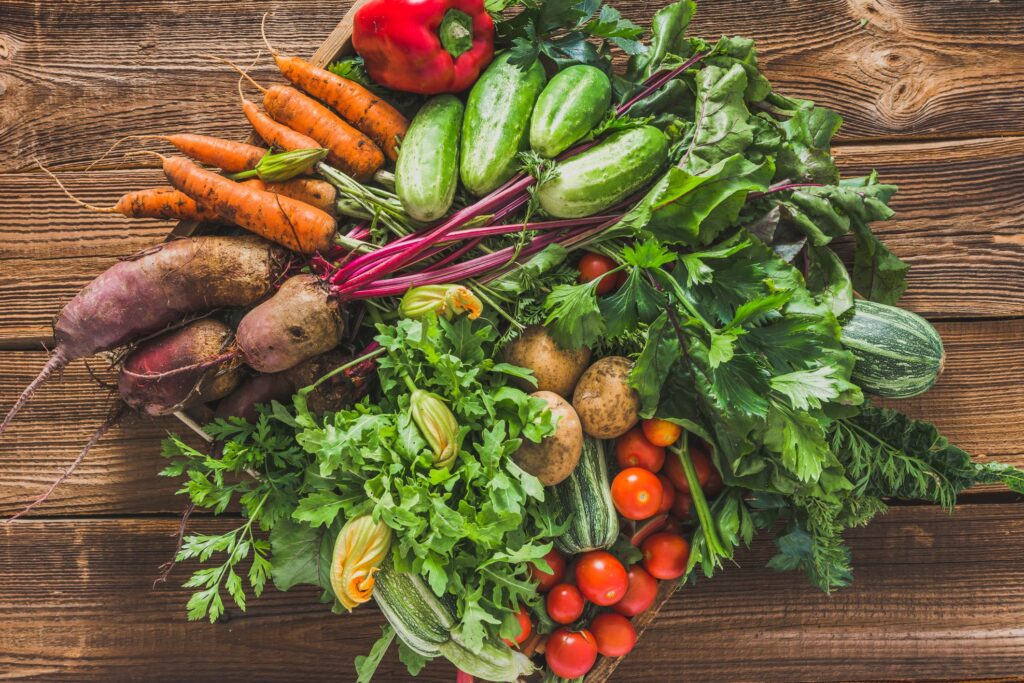By Cristian DeRusha

As summer heat begins to subside this fall, now is a great time to start thinking about how you can turn your backyard into a bountiful garden. Whether you want to grow colorful flowers or plant the seeds for fresh produce, starting a backyard garden is a fulfilling and family-friendly activity that can brighten both your home and your dinner menu.
If you’ve never planned your own garden or if you’re getting ready to start fresh for the new season, here are 10 tips that can help you along the way:
- Protect Your Nails
Before getting started, there is an easy trick to prevent dirt from accumulating under your fingernails while you work without gloves. If you draw your fingernails across a bar of soap, then you will seal the undersides of your nails to keep the dirt out. Once you’re finished, use a nail brush and run your hand under warm water, and your nails will be sparkling clean.
- Avoid Chemical-Based Fertilizers and Pesticides
Did you know that chemical lawn products can seep into your crops? Many store-bought fertilizers and pesticides are often synthetic, with chemicals that can affect the health of your garden and your family. For cleaner produce, look for environmentally friendly alternatives like compost or all-purpose organic fertilizer. The best organic fertilizers use simple ingredients that come from nature, so the next time you’re at the store, double check the ingredients list to make sure it’s naturally sourced.
- Alternative Plant Food
Gardening is an opportunity to explore new things, especially when trying to find the most efficient way to treat a crop. The next time you boil or steam vegetables, use the leftover water to feed your garden. Not only is this a cost-effective and resourceful hack, but the nutrients in the water also help your plants grow and keep your soil moist. You’ll rest easy knowing that your garden is taken care of and be amazed with the results!
- Don’t Plant Too Much of the Same Thing
To prevent waste, be mindful of how much of one plant you will need to feed your entire family. Planting too much of one thing will cause overproduction and will take nutrients from the soil that could be used for more variety. This will also help you diversify the produce options on your dinner plate and give you the opportunity to try new things!
- Choose Crops Wisely
Before you pick out which crops to grow this season, take the time to do some research. Choose crops that will be easier to grow in your specific environment. Think about how much sunlight your garden gets each day and select products that you know will bloom in high-sun or high-shade environments. Check out these shade-loving plants that thrive in locations with less light.
- Replant Roots
Looking for more plants in your garden? When snipped at the right time and replanted, your stems can develop roots and become brand new crops! For example, using the root clippings from your early summer tomatoes will give you a beautiful early fall tomato crop. For more information on replanting and propagating the produce in your garden, check out this article from Better Homes & Gardens.
- Repeat Your Successes
Weather and soil have a huge effect on the way the crops come out. You might get a wonderful harvest of basil and mint, but your tomatoes don’t come out as well as you might have hoped. Focus on repeating your successes and replant the crops you’re proudest of but take the time to learn how to improve your harvest each season.
- A Smart Use For Leftover Tea and Coffee
Leftover tea and coffee grounds acidify the soil and help acid-loving plants like camellias, gardenias and blueberries. A small amount will go a long way; it only needs to be added once a month. Additionally, chamomile tea helps control damping-off fungus which can harm the seedlings as they grow, ruining your beautiful garden. Check out more ways to repurpose coffee grounds beyond fertilizing your garden here.
- Pick Produce At Their Peak
It’s important to harvest your produce at the right time, and this isn’t a “one size fits all” technique. Different fruits and veggies have specific harvest windows that, if you cut them off too early, you may lose nutrients a lot faster than normal. Once you harvest, refrigerate your leafy greens to preserve them for the longest amount of time possible.
- Make Sure To Include Essential Kitchen Herbs
Culinary herbs are pricey to buy, but easy to grow yourself. When selecting what to include in your garden this season, don’t forget about essential herbs like thyme, basil, or rosemary that can take your cooking to the next level. Section off a corner of your plot for a dedicated herb garden and when you’re ready to harvest, make sure to check how to store them for long-lasting freshness.
Using these tips will help you enjoy your garden to the fullest and feed you and your family with the healthiest ingredients. Now, it’s time to make that gardening plan and start getting your hands dirty in your own backyard!

